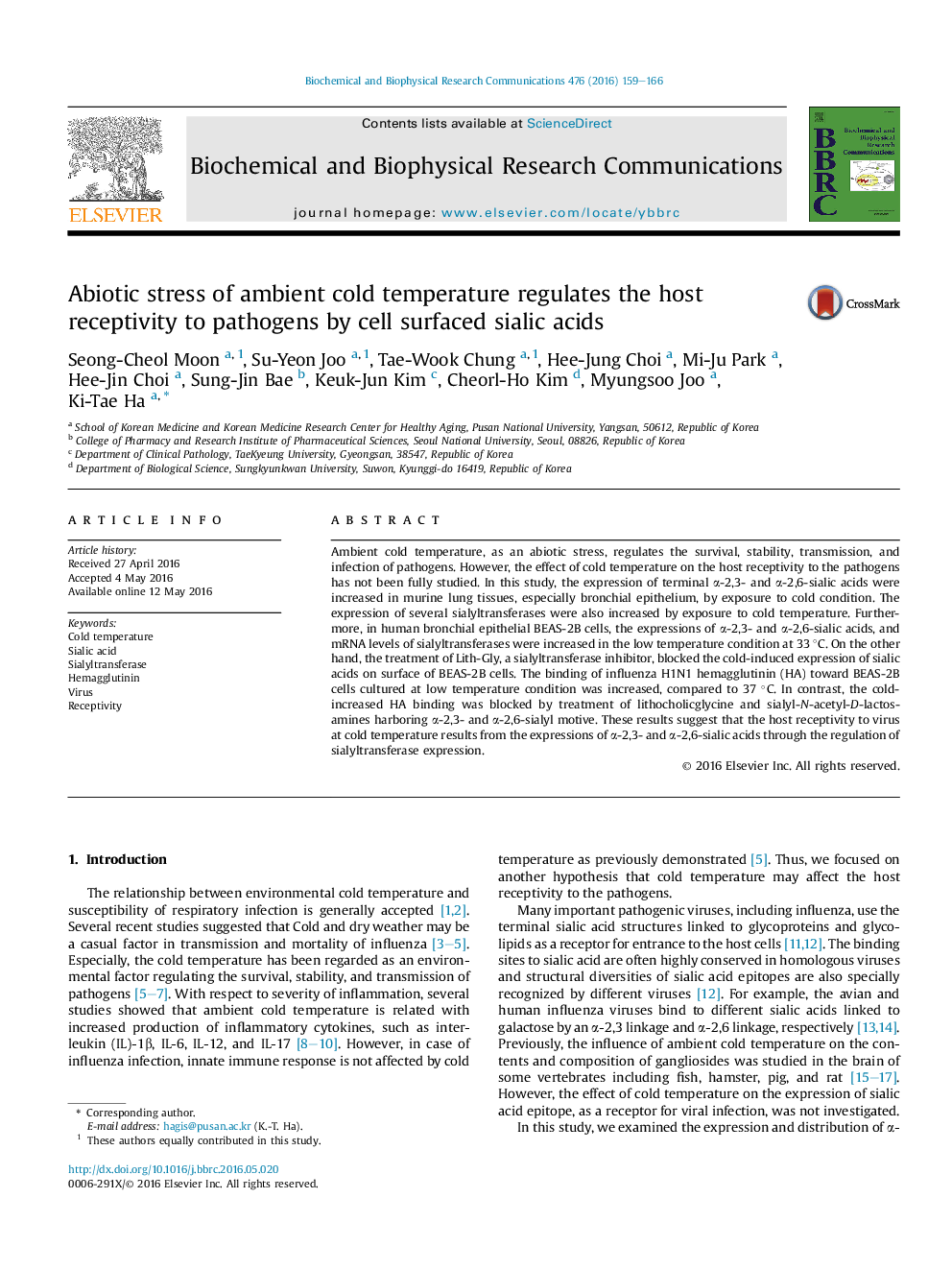| Article ID | Journal | Published Year | Pages | File Type |
|---|---|---|---|---|
| 1927796 | Biochemical and Biophysical Research Communications | 2016 | 8 Pages |
•We suggest a novel mechanism underlying cold-induced respiratory viral infection.•Ambient cold increases the expression of cell surface sialic acids.•Viral hemagglutinin binds to cold-induced sialic acid epitopes.•Hemagglutinin binding was blocked by sialyltransferase inhibitor and sialyl-LacNac.
Ambient cold temperature, as an abiotic stress, regulates the survival, stability, transmission, and infection of pathogens. However, the effect of cold temperature on the host receptivity to the pathogens has not been fully studied. In this study, the expression of terminal α-2,3- and α-2,6-sialic acids were increased in murine lung tissues, especially bronchial epithelium, by exposure to cold condition. The expression of several sialyltransferases were also increased by exposure to cold temperature. Furthermore, in human bronchial epithelial BEAS-2B cells, the expressions of α-2,3- and α-2,6-sialic acids, and mRNA levels of sialyltransferases were increased in the low temperature condition at 33 °C. On the other hand, the treatment of Lith-Gly, a sialyltransferase inhibitor, blocked the cold-induced expression of sialic acids on surface of BEAS-2B cells. The binding of influenza H1N1 hemagglutinin (HA) toward BEAS-2B cells cultured at low temperature condition was increased, compared to 37 °C. In contrast, the cold-increased HA binding was blocked by treatment of lithocholicglycine and sialyl-N-acetyl-D-lactosamines harboring α-2,3- and α-2,6-sialyl motive. These results suggest that the host receptivity to virus at cold temperature results from the expressions of α-2,3- and α-2,6-sialic acids through the regulation of sialyltransferase expression.
Graphical abstractFigure optionsDownload full-size imageDownload as PowerPoint slide
